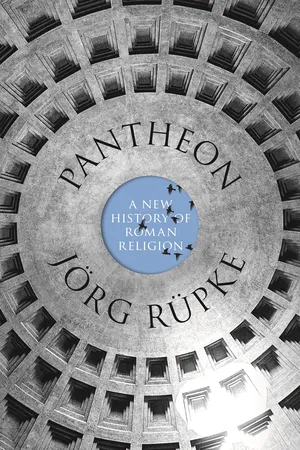![]()
REFERENCES
AAVV 1989. Urbanistica ed architettura dell’antica Praeneste: Atti del convegno di studi archelologici, Palestrina 16/17 Aprile 1988. Palestrina.
Aberson, M. 2009. “Le statut des dépôts d’offrandes dans l’Italie du Ve au Ier siècle av. J.-C. : l’apport de l’épigraphie et des textes normatifs.” In S. Bonnardin and C. Hamon, eds., Du Matériel au Spirituel: Réalités archéologiques et historiques des “dépôts” de la Préhistoire à nos jours. XXIXe Rencontres Internationales d’Archéologie et d’Histoire d’Antibes (Antibes, France, du 16 au 18 octobre 2008). Antibes. 97–104.
Abramenko, A. 1993. Die munizipale Mittelschicht im kaiserzeitlichen Italien: Zu einem neuen Verständnis von Sevirat und Augustalität, Europäische Hochschulschriften; Reihe 3, Histoire, sciences auxiliares de l’histoire 57. Frankfurt am Main.
Abry, J. H. 2011. “La place des Astronomiques de Manilius dans la poésie astrologique antique.” In I. Boehm and W. Hübner, eds., La poésie astrologique dans l’Antiquité: Actes du colloque organisé les 7 et 8 décembre 2007 par J.-H. Abry. Paris. 95–114.
Abulafia, D. 2005. “Mediterraneans.” In W. V. Harris, ed., Rethinking the Mediterranean. Oxford. 64–93.
Accorinti, D. 2009. “Poèsie et Poétique dans l’Oeuvre de nonnos de Panopolis.” In P. Odorico, P. A. Agapitos, and M. Hinterberger, eds., “Doux Remède …” Poèsie et Poétique à byzance. Paris. 67–98.
________. 2013. “Nonnos von Panopolis.” Reallexikon für Antike und Christentum 25: 1107–29.
Adams, C., and R. Laurence, eds. 2011. Travel and Geography in the Roman Empire. London.
Adams, J. N. 2007. The Regional Diversification of Latin, 200 BC–AD 600. Cambridge.
Addey, C. 2014. Divination and Theurgy in Neoplatonism: Oracles of the Gods, Ashgate Studies in Philosophy and Theology in Late Antiquity. Farnham.
Adluri, V. P., ed. 2013. Philosophy and Salvation in Greek Religion, Religionsgeschichtliche Versuche und Vorarbeiten 60. Berlin.
Agelidis, S. 2010. “Tod und Jenseits.” In V. Kästner, ed., Etrusker in Berlin: Etruskische Kunst in der Berliner Antikensammlung—Eine Einführung. Berlin. 41–56.
Agosti, G. 2013. “Classicism, Paideia, Religion.” In R. L. Testa, ed., The Strange Death of Pagan Rome: Reflections on a Historiographical Controversy. Giornale Italiano di Filologia Bibliotheca 16. Turnhout, Belgium. 123–40.
________. 2015. “Chanter les dieux dans la société chrétienne: les Hymnes de Proclus dans le contexte culturel et religieux de leur temps.” In N. Belayche and V. Pirenne-Delforge, eds., Fabriquer du divin: Constructions et ajustements de la représentation des dieux dans l’Antiquité. Collection Religions: Comparatisme—Histoire—Anthropologie 5. Liège. 183–211.
Aigner-Foresti, L. 2000. “Orientalische Elemente im etruskischen Königtum?” In F. Prayon and W. Röllig, eds., Akten des Kolloquiums zum Thema “Der Orient und Etrurien”: Zum Phänomen des “Orientalisierens” im westlichen Mittelmeerrum (10.—6. Jh. v. Chr.). Pisa. 275–86.
Albers, J. 2010. “Tempel, Terrasse und Altar. Untersuchungen zum etruskischen Temenos.” In A. Kieburg and A. Rieger, eds., Neue Forschungen zu den Etruskern—Beiträge der Tagung vom 07. bis 09. November 2008 am Archäologischen Institut der Universität Bonn. Oxford. 73–82.
________. 2013. Campus Martius: Die urbane Entwicklung des Marsfeldes von der Republik bis zur mittleren Kaiserzeit, Studien zur antiken Stadt 11. Wiesbaden.
Albert, S. 1980. Bellum iustum: Die Theorie des “gerechten Krieges” und ihre praktische Bedeutung für die auswärtigen Auseinandersetzungen Roms in republikanischer Zeit, Frankfurter Althistorische Studien 10. Kallmünz.
Alberti, M. E., and S. Sabatini, eds. 2012. Exchange Networks and Local Transformations: Interaction and Local Change in Europe and the Mediterranean from the Bronze Age to the Iron Age. Oxford.
Alföldy, G. 1973. Flamines provinciae Hispaniae citerioris, Anejos de Archivo Español de Arqueologia 6. Madrid.
________. 1991. “Augustus und die Inschriften: Tradition und Innovation: Die Geburt der imperialen Epigraphik.” Gymnasium 98: 289–324.
________. 1997. “Die Mysterien von Panóias (Vila Real, Portugal).” Mitteilungen des deutschen archäologischen Instituts, Madrid 38: 176–246.
Allorge-Courtin, M. 2011. “La rue à Rome, spectable des apparences d´après Martial et Juvénal.” In M.-J. Kardos and L. Voinson, eds., Habiter en ville au temps de Vespasien: Actes de la table ronde de Nancy, 17 octobre 2008. Etudes d’archéologie classique 14. Nancy, Paris.
Ameling, W. 2009. “The Epigraphic Habit and the Jewish Diasporas of Asia Minor and Syria.” In H. Cotton, ed., From Hellenism to Islam: Cultural and Linguistic Change in the Roman Near East. Cambridge. 203–34.
________. 2011. “Petrus in Rom: Zur Genese frühchristlicher Erinnerung.” In S. Heid, ed., Petrus und Paulus in Rom: Eine interdisziplinäre Debatte. Freiburg i. Br. 468–91.
Amiotti, G. 1990. “Il ‘monumento ai caduti’ di Adamklissi.” In M. Sordi, ed., “Dulce et decorum est pro patria mori”: La morte in combattimento nell’antichità. Milano. 207–13.
Ampolo, C. 1981. “La città arcaica e le sue feste: Due ricerche sul Septimontium e l’Equus October.” Archeologia laziale 4: Quarto incontro di studio del comitato per l’archeologia laziale: 233–40.
________. 1988. “Lavinium and Rome.” Classical Review 38 (1): 117–20.
Andersen, W. 2003. The Ara Pacis of Augustus and Mussolini: An Archeological Mystery. Geneva.
Ando, C. 2000. Imperial Ideology and Provincial Loyalty in the Roman Empire, Classics and Contemporary Thought 6. Berkeley.
________. 2001. “The Palladium and the Pentateuch: Towards a Sacred Topography of the Later Roman Empire.” Phoenix 55: 369–411.
________. 2003. “A Religion for the Empire.” In A. J. Boyle and W. J. Dominik, eds., Flavian Culture: Culture, Image, Text. Leiden.
________. 2005. “Interpretatio Romana.” Classical Philology 100/1: 41–51.
________. 2008. The Matter of the Gods: Religion and the Roman Empire, Transformation of the Classical Heritage 44. Berkeley.
________. 2010. “Imperial Identities.” In T. Whitmarsh, ed., Local Knowledge and Microidentities in the Imperial Greek World. Greek Culture in the Roman World. Cambridge. 17–45.
________. 2011. Law, Language, and Empire in the Roman Tradition. Philadelphia.
________. 2012. Imperial Rome, AD 193–284: The Critical Century, Edinburgh History of Ancient Rome. Edinburgh.
________. 2013a. “Cities, Gods, Empire.” In T. Kaizer et al., eds., Cities and Gods: Religious Space in Transition. Babesch Supplement 22. Leuven. 51–57.
________. 2013b. “Subjects, Gods, and Empire, or Monarchism as a Theological Problem.” In J. Rüpke, ed., The Individual in the R...
